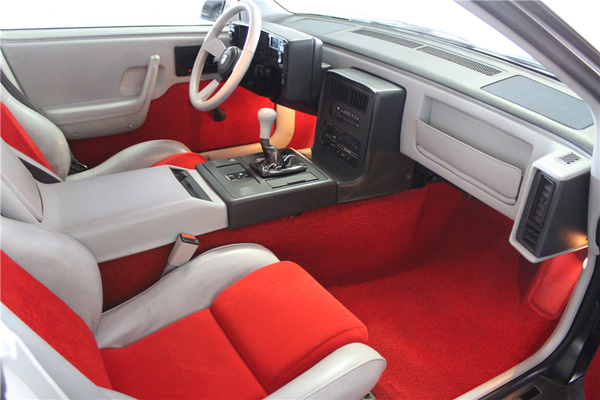That was (and is!) a cool kit.
Since this is @Ace's thread I think it's worth a bit of exposition, for his enlightenment.
tl/dnr: pay attention to all the dimensions, then understand why what you seek is not practical—or even desirable—if the 356 experience is what you seek.
The Pontiac Fiero had a 93.4 inch wheelbase. The Ferrari's was just over 92. That is a key part of what made using the one to copy the other feasible. Now look closer:
Upon their introduction in 1983, Fieros were considered to be tiny cars. (GM E bodies' wheelbase was 114. The V body (Allante) was 99. A and X bodies (Citation) were 105, and so on.) The front and rear wheels on the Fiero were a foot closer together than just about anything else on the road at the time, and, again... it was still bigger than the 308.
This is because cars just got way bigger generally between the 50s and the 70s.
This was true in all dimensions. Wheelbases stretched, but the real story was width.
Fieros are 69 inches wide. A Ferrari 308 is a bit under 67.
What all this means is that, if one were to acquire a complete Ferrari 308 body shell and a 1985 Fiero, one would encounter great difficulty fitting the former upon the latter's chassis. The only way to make a Fiero look like Magnum PI's car is to make your own 308-ish body kit. You'd widen the whole thing about 1.5 inches to get the wheels tucked. You'd lengthen it a couple inches too so the proportions looked right. You'd do whatever was needed to match the door openings to the chassis pickup points. The rake of the windscreen would need minor adjustment. With all that done, you'd start over because it looked like crap...
This is not stuff you or I could do easily in our respective garages.
—and it would still be easier than if we tried to make an existing 308 body—which is oh-so-close to being the right size—fit on the Fiero space frame.
Now let's go back and look at the dimensions of the 356, a design that's nearly four decades older than a Fiero.
The 356's wheelbase is roughly 83 inches. It is nearly a foot shorter than a Fiero, which was tiny for its day, which was 3 decades ago.
The Speedster's body width is 65 inches. It's four inches narrower than a Fiero. Front track width is less than 51 inches.
Speedster bodies barely fit on a modified Beetle pan because even 1960s Bugs had a wider track than the 356. Your 1968 Bug front suspension has a track width of 51.6 inches. The difference is only about 7/8 of an inch. Less than a half inch per side! Trivial, right?
It matters.
Miatas are some of the smallest sports cars made today. Wheelbase is 91 inches. Track width is 59 inches.
The front wheels of a Miata are eight inches wider apart from each other as those of a '50s Porsche Speedster. This is not trivial.
And this is why you can't use a modern car's chassis as the basis for a 356 tribute. Literally every car out there is way. too. big.
You really can't begin to think about what golden-era sports cars were all about without at least standing next to one and appreciating its scale. A 550 Spyder is under 12 feet long and three feet high. Parked next to any modern car it looks like a child's toy.

—and therein lies its charm. Everything both great and problematic about a Speedster derives from the fact that it is in no way similar to other vehicles, which is glaringly obvious because the thing is akin to a 7/8-scale model of a modern car.
Ergo: every single thing we do to "modernize" these cars—to improve their handling, increase their power, deaden the sound, seal against the weather—carries them away from their core.
Sure, we all do it to some extent. Nobody wants to run without seatbelts or radial tires, almost everyone runs disc brakes, at least in front. These are necessary concessions to the realities of today's traffic.
But every step we take in this direction carries us that much farther away from the ideal we thought we admired. From the experience we at first sought.








